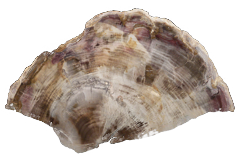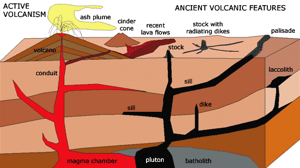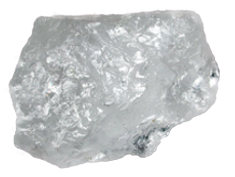![]()
![]()
Throughout the Black Rock area in Nevada one finds every conceivable rock you can think of. Just about all of us have no idea what we are looking at. Our rock collecting is picking up "monkey rocks', those shiny or neat looking peices everywhere. In reality we come across all sorts of interesting things we actually take for granite -granted. This glossary defines many of the rocks we find with accurate descriptions and sometimes photos. Most of these rocks have crystal formations associated with them; which we do not cover. It is not intended to be a Geology Lesson.
A-C • D-F • G-I • J-L • M-O • P-R • S-U • V-X • Y-Z
PERLITE -
is an amorphous volcanic glass that has relatively high water content, typically formed by the hydration of obsidian. Perlite has the unusual characteristic of expanding and becoming porous when it is heated. It can expand to as much as twenty times its original volume. Expansion occurs when the glassy lava rock is heated to 1600 degrees F (871 degrees C) and the water molecules trapped in the rock turn into vapor causing the rock to expand. (This is the same principle as the water in popcorn that causes the kernel to pop when it is heated.) Before it is expanded, Perlite is commonly gray, but can also be green, brown, blue or red. After it has been heated, perlite is typically light gray to white |
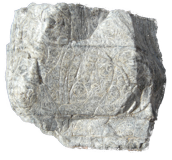 |
|
|
||
|
||
PYRRHOTITE -
A russet colored iron sulfide mineral. It is also called magnetic pyrite, because the color is similar to pyrite and it is weakly magnetic. The magnetism decreases as the iron content increase. Pyrrhotite is a rather common trace constituent of mafic igneous rocks especially norites. It occurs as segregation deposits in layered intrusions associated with pentlandite, chalcopyrite and other sulfides. It occurs in masses associated with copper and nickel mineralisation. It also occurs in pegmatites and in contact metamorphic zones. Pyrrhotite is often accompanied by pyrite, marcasite and magnetite. Pyrrhotite does not have specific applications. It is mined primarily because it is associated with pentlandite, sulfide mineral that can contain significant amounts of nickel and cobalt.
|
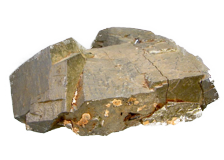 |
|
PYRITE - or iron pyrite, also known as fool's gold, is an iron sulfide. This mineral's metallic luster and pale brass-yellow hue give it a superficial resemblance to gold, hence the well-known nickname of fool's gold. The color has also led to the nicknames brass, brazzle, and Brazil, primarily used to refer to pyrite found in coal. Pyrite is the most common of the sulfide minerals. In ancient Roman times, this name was applied to several types of stone that would create sparks when struck against steel.
Pyrite is usually found associated with other sulfides or oxides in quartz veins, sedimentary rock, and metamorphic rock, as well as in coal beds and as a replacement mineral in fossils. Despite being nicknamed fool's gold, pyrite is sometimes found in association with small quantities of gold. Gold and arsenic occur as a coupled substitution in the pyrite structure. |
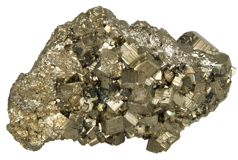 |
|
|
||
